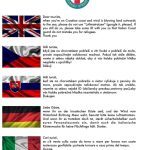First economic consequences of the Agrokor crisis?
In April, consumer spending in Croatia rose by 2.8 percent year-on-year, much slower than a month before and below analysts’ expectations. However, the streak of 32 months of growth in a row has been extended, reports tportal.hr on May 30, 2017.
The Central Bureau of Statistics announced on Tuesday its first estimate of retail trade turnover, which in April, according to calendar-adjusted data, rose by 5.7 percent nominally and by 2.8 percent in real terms in comparison to the same month last year.
This is a significantly slower growth than expected. Four macroeconomists, who participated in a HINA survey, expected an average growth in April of 4.5 percent year-on-year. Their growth estimates ranged from 2.0 to 6.8 percent.
This is also a significantly slower growth compared to the previous month, when retail sales jumped by 7.7 percent, most since August 2007.
However, April continued the record-breaking positive trend, given that spending has been increasing now for 32 months in a row, which has not been recorded since the Central Bureau of Statistics started monitoring this data.
“Even with slower dynamics, the data for March have confirmed the trend of positive growth rates, which began in September 2014,” say analysts of Raiffeisenbank Austria (RBA) in their review of the report. They point out that the slightly lower indicators of retail trade turnover were also seen in the recently published data of the Croatian National Bank (HNB) on consumer perceptions. “In April, there was a noticeable deterioration in the monthly and annual levels of all three composite indicators of consumer confidence. Poorer indicators of consumer optimism are most likely due to the negative expectations of households regarding their economic and financial situation over the next year, caused by uncertainties associated with the events around Agrokor,” according to the RBA analysts.
In shocking news, industrial production in Croatia fell unexpectedly by 0.6 percent in April compared to the same month last month, which is its first drop after more than two years and which could be the result of the crisis in Agrokor. The Central Bureau of Statistics announced on Tuesday that industrial production, according to calendar-adjusted data, fell by 0.6 percent in April compared to the same month last month.
Four macroeconomists who participated in a HINA survey estimated earlier that industrial production would grow by 2.4 percent on an annual basis. Their growth estimates ranged from 2.2 to 2.6 percent.
“According to the latest data, the volume of industrial production has returned to negative annual rates after more than two years of growth,” say analysts of Raiffeisenbank Austria (RBA).
The decline in April was the first drop in industrial production since January 2015. The weaknesses were already present in the data for March when production stagnated on an annual basis, and its 25-month trend of growth was interrupted.
RBA analysts say that the latest high-frequency indicators point to the slowdown in economic activity in the real sector. “Given the robust recovery of the leading Croatian foreign trade partners and the absence of a significant slowdown in consumer spending, it is likely that the latest data for March and April are related to the situation in Agrokor,” say RBA analysts.
They also note that, given the circumstances, their initial projections of industrial production growth of about 4 percent for this year now look optimistic.







